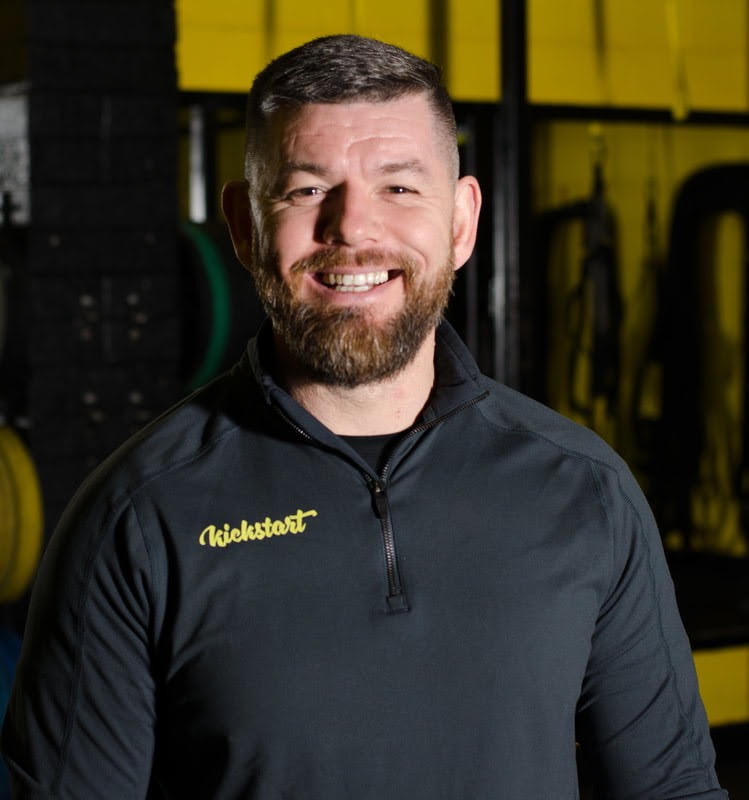Coach as Counselor Part 3 – How to Spot Mental Health Red Flags
MindsetABOUT THE AUTHOR


Darren Dillon
Darren Dillon is the owner and director of Kickstart Fitness Ireland. Founded in 2010, Kickstart Fitness has grown from what was initially a bootcamp in a local park into what is now a center of excellence for TRX®️Training and functional training, and a high performance hub for strength and conditioning. Darren also serves as head of performance at Shamrock Rovers FC, working with and programming for the academy through to senior professional soccer players. He is also Ireland’s only official TRX®️ Master Trainer, delivering all the company’s education courses to the Irish fitness industry.
In the previous two posts in this series, we explored ways to clean up your athletes’ mental hygiene and how to use your situational awareness to spot intuitively when someone is struggling. For this third installment, we’re turning our attention to how we can combine subjective observation and objective measurements to monitor players’ mental health and hopefully spot any red flags so we can address an issue like anxiety or depression before it escalates.
One way to do this is to ask each client to complete a daily readiness survey every morning.
On one hand, this will help both you and them to gauge levels of readiness and preparedness going into the upcoming session. It can also offer a window into the adequacy of recovery from previous workouts, and help you as a coach assess your load balancing, and, if need be, tweak or fine-tune your programming.
And if you’re asking your athletes to answer a few questions daily, it can increase the level of buy-in and accountability.
As significant as these advantages are, I’d argue that such a survey offers an even bigger opportunity: to keep tabs on your athletes’ emotional and cognitive wellbeing.
If a player is consistently logging poor sleep quality, mood, and stress scores, these are not merely a reflection of the physical impact of their workouts. The scores can also serve as indicators of bigger issues that transcend training and competition. You can then see if these are accompanied by noticeable dips in performance, irritability or erratic behavior, absenteeism, or a loss of enthusiasm for doing the work.
We cannot just rely on numbers, whether they’re self-reported or provided by a fitness tracker or app. Rather, we must put objective data into qualitative context.

If several behavioral and performance-related indicators are consistent with low readiness survey scores, it’s likely that there’s at least one lifestyle issue that needs to be addressed. In some cases, the athlete is all too aware of the problem and may be reluctant to say anything because they don’t want to appear weak or as if they’re not coping (this particularly goes for guys, in my experience – me too). Or it might be an issue from their past – like childhood trauma – that has come back to haunt them subconsciously and is now bubbling up to the surface without them realizing it.
You might not be qualified to play the role of counselor beyond a certain point, but you certainly can take the first step in figuring out what the real story is and then doing everything you can to help.
As I mentioned in the previous post, this might include putting the client in touch with a psychologist or psychiatrist, depending on the situation. But first, you’re going to need to make the athlete comfortable with a certain level of honest disclosure. This requires a bedrock of mutual, reciprocal trust that you’ve built up over the preceding weeks, months, or years. While you can try to come alongside a new client who’s going through a tough time, the longer the relationship and the more engaged you’ve been, the better your chances of breaking through, particularly if an athlete finds it difficult to be vulnerable.


When I recognize that there’s an issue with one of my athletes that is at least partially to do with their mental health, I try to set up a meeting offsite. This means somewhere away from where we work together – i.e. not at the gym for my general population clients and not on the training ground for my professional football (soccer) players.
In the first post in this series, I mentioned getting together at a café. Another go-to of mine is to join an athlete for a scenic walk in the countryside. There’s something about moving through terrain that helps us to not get stuck during the conversation, which seems to keep rolling along even as we’re physically continuing on our route. This isn’t just something I came up with on the fly – there are even psychotherapists who run with their clients.
In addition to covering the emotional components of the client’s issue and getting them to open up to me a bit, I delve deeper into their habits and rituals – or lack thereof.
A lot of troubles we identify with athlete recovery can be attributed to randomness and lack of structure. Players who do something different every evening might like that kind of variety, but for certain personality types, it can create a feeling of instability. I try to find out what their typical routine looks like and then work backwards from that disclosure to troubleshoot. If someone’s drinking a lot at night, playing video games into the wee hours, or still pounding something from Starbucks at 9 PM, chances are they’re keeping themselves in an over-stimulated state and that their sleep quality is suffering as a result.
Another potential issue is poor hydration and nutrition. When you’re training hard, you simply cannot outrun bad food and inadequate fluid intake – at least not if you want to perform at anywhere close to your best.
Relationships are another common flashpoint for a lot of players. If someone is arguing with their significant other and then going straight to bed, it’s unlikely that they’re going to fall asleep quickly or wake up feeling anything other than shattered. This pattern can quickly compound, as the other side of the cycle is that they’re more irritable and short-tempered, which in turn increases the chances of having another screaming match.




It’s important not to try and fix everything all at once. If you give someone a list of 20 things and say, “Now go away and do all of these,” they’re going to be overwhelmed, which is the exact opposite of what you want with someone who’s already overly anxious, chronically stressed, or depressed.
Instead, I’ll try to help them find the biggest roadblock. Then we’ll attempt to remove it before moving on to the next issue. That also enables them to start getting some quick wins. And if it’s a big thing like interpersonal issues, poor sleep problems, unhealthy eating or some of the other “big rock” problems I just mentioned, fixing that one thing can make a profound difference right away.
Then it’s just a question of replacing one bad habit with a more positive one, and grooving the new ritual until it becomes automatic.
It’s also important to keep the lines of communication open throughout the process. It’d be nice if life were linear and problems resolved themselves overnight. But that’s just not reality. So if you want to help your athletes with their mental health, you need to commit to being all in for the long haul. If you do, the payback is going to be so much more than you can measure in pounds or kilos on the squat bar.
Are you a better coach after reading this?
More coaches and athletes than ever are reading the TrainHeroic blog, and it’s our mission to support them with usefull training & coaching content. If you found this article useful, please take a moment to share it on social media, engage with the author, and link to this article on your own blog or any forums you post on.
Be Your Best,
TrainHeroic Content Team
HEROIC SOCIAL
HEROIC SOCIAL
TRAINING LAB
Access the latest articles, reviews, and case studies from the top strength and conditioning minds in the TH Training Lab

